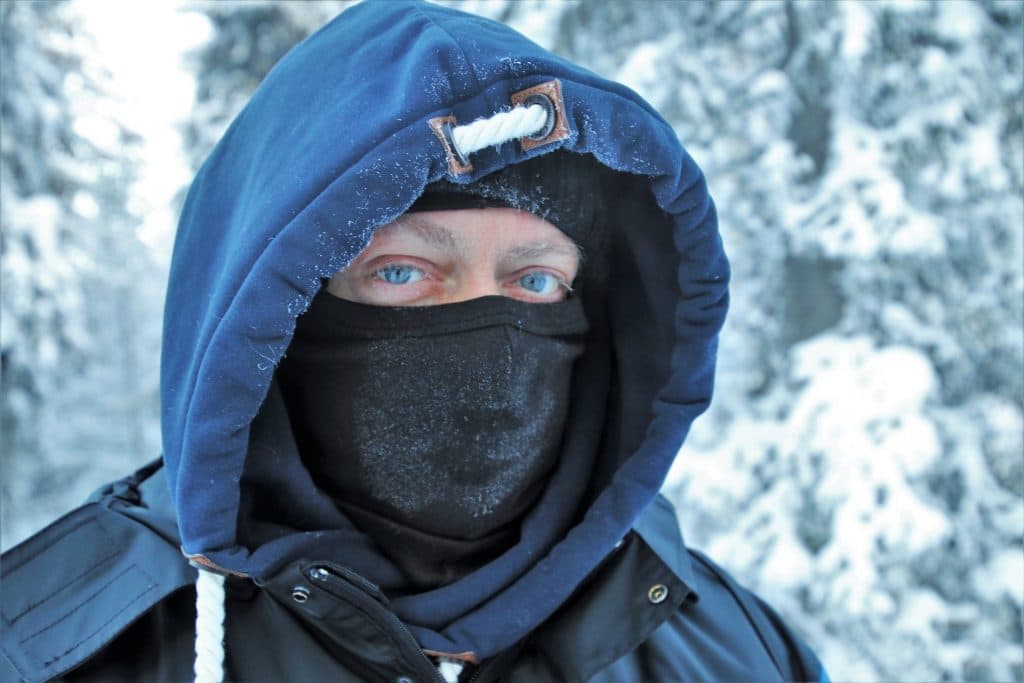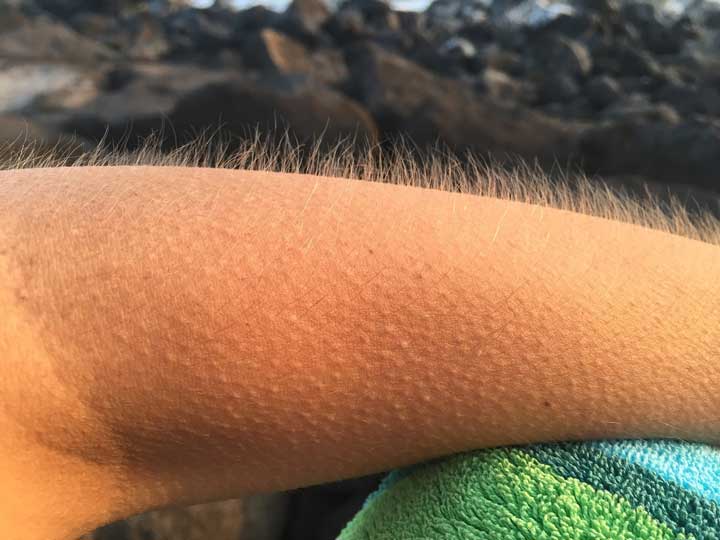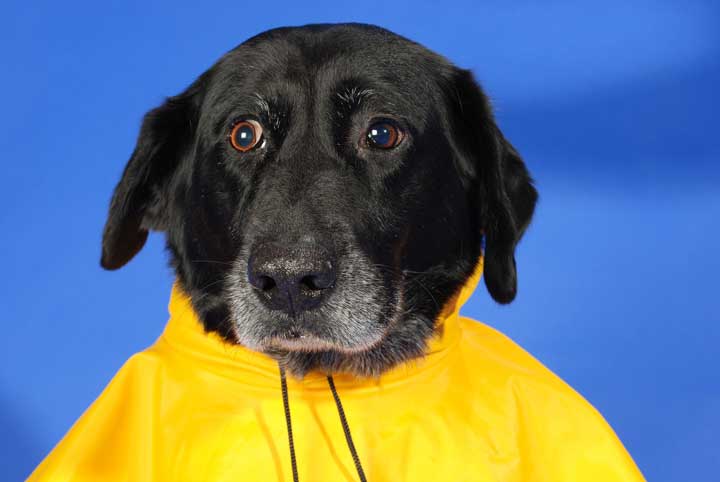Getting dressed may seem like a basic skill, but layering in a true art form that must be meticulously shaped and learned in order to have a comfortable and successful outdoors experience.
Some may think that layering is mostly needed during the winter, however, this is not necessarily the case as your body will need to stay dry and in optimal condition in order to avoid complications that may come with your body temperature.
The Purpose of Layering
Layering is not only meant to aid in keeping you warm, but also to maintain your body temperature cool and dry in the event of hot weather.
Whether you will be exposed to temperatures below zero or dealing with hot and humid weather, you will need to understand how you can layer your clothes so that you can stay protected from the elements.

Hypothermia
Hypothermia is a condition that happens when your body is exposed to cold, wet or windy conditions and it loses heat faster than it can produce it. Normal body temperature is 98.6° F (37° C), when there is a quick decline of body temperature that falls below 95° F (35° C), that is considered to be hypothermia.
As a result of hypothermia, your heart stops beating due to the lack of proper function of the body and brain, making cardiac arrest the ultimate cause of death.
Being wet in the cold, even for a short period of time, is the first step that leads to hypothermia. Many connect the idea of hypothermia with being completely submerged under freezing water, but even being slightly wet can lead to this condition. Which is precisely why it’s necessary to learn the proper way to layer clothes and wear dry-fit garments.
There are three types of hypothermia, which all vary depending on the body temperature of the person and the symptoms they are suffering from. The three types are mild, moderate and severe hypothermia.
Mild Hypothermia Symptoms
Mild hypothermia is considered to be when the body temperature reaches between 95° F (35° C) to 89.6° (32° C). The symptoms include:
- Confusion and Loss of Awareness
- Shivering and Chattering
- Clumsy or Slow Movements and Reactions
- Sleepiness
- Exhaustion
- Rapid Breathing
- Tachycardia (rapid heart palpitations)
- Tachypnea (rapid breathing)
- Pale Skin
- Excessive Urination
- Weak Pulse
Moderate Hypothermia Symptoms
Moderate hypothermia is considered to be when the body temperature reaches between 89.6° F (32° C) to 82.4° (28° C). The symptoms include:
- Slurred Speech or Difficulty to Speak
- Decline of Mental Function
- Loss of Shivering and Chattering
- Muscle Stiffness
- Slowed Breathing and Heart Rate
- Decreased Blood Pressure
- Abnormal Heart Rhythm
- Dilated Pupils
- Change of Skin Color from Pale to Bluish.
- Loss of Consciousness
Severe Hypothermia Symptoms
Severe hypothermia is the final stage of hypothermia and it will almost certainly lead to death without prompt and appropriate care. Severe hypothermia is considered to be when the body temperature falls below 82.4° F (28° C). The symptoms include:
- Absence of Reflexes
- Low Blood Pressure
- Fluid in Lungs
- Low Urine Output
- Coma
- Cardiac Arrest
- Death

The Golden Rule of Hiking
When it comes to garments worn for hiking and outdoor use in general, layering is the key because you will want to keep your body temperature stable. The key is to not be too warm or too cold.
“During my first month in the Alpine troops while in the Italian army I went on a hike during the winter in north-east Italy, in the mountains near the border with Austria. I used to wear everything that the army provided to resist the low temperature. On the day of my first hike, the temperature dropped to about -15° F [-25 Celsius]. I was all geared up, and I didn’t realize I had warmed up so much. When I went back to my quarters after the hike, my body was all smoking because my clothes were soaking wet. The sweat from my body was evaporating and as a result, I got a bad case of bronchitis. Since that day, I learned to go light with clothing and be a little chilly at the beginning to keep from sweating and soaking my clothes.”
- Alex, Founder of outdoorsbeing.com
This testimony takes us to what the golden rule of winter hiking is: stay dry.
As long as you count on having the right equipment, staying warm will not be the issue on cold, windy days. As you move and exercise, you could actually get too warm and sweaty, causing your body to get wet.
Once your body is wet, things can change from normality to a life and death situation as hypothermia can hit in less than five minutes in certain weather conditions.
Evaporation And Convection
Sweating is a natural reaction that our bodies do to stabilize body temperature. Sweat normally evaporates as wind hits our skin, however triggering the evaporation process of sweat could make you sick.
It’s important to use layering to avoid getting too hot and to stay dry with the right type of clothing. Having a damp t-shirt with sweat against your skin will keep your body from staying warm, which could be the perfect recipe for hypothermia. Sure, you may be hot as you are sweating, but the moment you stop moving your body will start to get cold.
If you’re in the mountains, it is not uncommon for there to be storms with temperatures lowering quickly, which could put you at great risk.
Convection is the transfer of heat as heated parts of liquid or gas circulate. This is relevant as wind could be the key to hypothermia because of convection if your clothes are damp.

The Function of Layers
There is real science behind layering, which always serves the ultimate purpose of following the golden rule of hiking. In addition to staying dry, layering aids in keeping you cool or warm.
But as mentioned before, there is a science to layering and every layer serves a purpose.
Base Layer
The base layer is your underwear. It serves the purpose of keeping the sweat off your skin and the clothes should be thin and stick to your skin. The top part of the base layer can be a long or short-sleeved shirt, but if you go for a long sleeve due to cold weather, look for shirts with thumb holes to keep drafts from getting in between your sleeves and gloves.

Some natural fabrics that can be used for the base layer are cotton, silk and merino wool. Otherwise, synthetic materials such as polyester, polypropylene and nylon can also be used.
Cotton is the least recommended fabric to use, as it absorbs water easily like a sponge and it would keep you wet instead. It is because of this absorption factor that it is recommended to collect water from plants.

Synthetics tend to be more affordable than natural fabrics, but they also have the tendency of developing body odor. When it comes to synthetics, it is recommended to use polyester as it does not get damp, which mitigates your chances of staying wet.

There are three factors that must be considered when choosing underwear: material, weight and fit. You want to find underwear that will wick moisture.
Synthetics are great wicking agents, and although they are not very good with body odor, they do give you a long-lasting durability. Natural fabrics are more breathable, which is why they are so good to not develop body odor as badly or easily, but they have a shorter lifespan compared to synthetic materials.
Merino wool is the one fabric that excels when it comes to odor prevention and it’s a great wicking agent. This specific type of wool is recommended over regular wool, as it may be a little itchy. You do, however, get used to the itchiness with time.

Middle Layer
The middle layer is meant to provide insulation from external temperatures. It will help to retain your temperature stable and keep you warm.
To be effective, the middle layer has to reflect your body heat back to you. This is the principle to keep you warm enough in any weather condition. For this layer, synthetic materials are also recommended, due to…
Fleece
For the middle layer, it is recommended to use polyester fleece due to its breathability and ease to dry. It can be found in light, midweight and heavyweight fabrics.

Although fleece is a great material to keep dry, you will need to wear a third layer in windy conditions as it won’t keep the wind or cold temperatures from penetrating the fabric.
Wool
A wool sweater can also be used instead of a fleece layer, which will provide far more insulation than fleece. Wool also provides wind and water resistance to a certain degree, something that fleece cannot provide.

Down
Down puffer jackets are quite popular as they trap body heat within small pockets that are found inside of these jackets.
Due to this ability to trap heat, down is widely used for the middle layer in addition to a wool or fleece layer underneath. The amount of layers will of course depend according to the climate in which you will be hiking.
This type of material is used as it is incredibly lightweight, and although they can be expensive, down jackets are perfect to go on trips for long distances as they weigh a maximum of half a pound (226 grams).
Down vs Synthetic Fabrics
Pros and Cons of Down
Pros
- The warmth-to-weight ratio is higher than synthetics.
- Takes fewer space thanks to its compressibility.
- Durability when taken proper care of.
Cons
- Not good at insulating when wet.
- Takes a long time to dry.
- Taking proper care is not easy.
- More expensive than synthetics.
Pros And Cons Of Synthetics
Pros
- Water-resistant.
- Insulates when damp.
- More affordable than down.
Cons
- Heavier than down.
- Takes more space than down.
- A warmth-to-weight ratio lower than down.
- Loses insulation power over time when stuffed.
Outer Layer

The outer layer of clothing one should wear will vary in price range significantly. This last layer should serve the purpose of protecting you from wind and rain. This top layer is what will keep water from seeping into the rest of your inner layers.
When looking for a garment to serve as your outer layer, you will come across what is called Durable Water Repellent, sometimes referred to as DWR. This means that your garment will not be impermeable, but it will be water-resistant.
Water-resistant clothing is considerably more lightweight than water-proof jackets, however they will not be too effective with more than a simple drizzle. Water-proof jackets are a little heavier and can be significantly more expensive, but they will provide the most protection against water to keep your inner layers from becoming wet.
Dressing Based on the Weather

Cold Weather
During the winter, it’s recommended to carry an extra layer of clothing that can provide you with further insulation in case of colder climate. This extra layer should always go before the outer layer.
Hot Weather
Layering should not only be done when you will be exposed to the cold. Hot weather has its own set of necessities, that must be addressed with the appropriate layering.
For the base layer, you should wear a short sleeve garment that provides wicking. Some types of fabric for shirts can spread moisture, helping to cool you down through evaporation.
UPF clothing

To stay protected from the sun, there are special garments called UPF clothing. UPF stands for Ultraviolet Protection Factor, which indicates how much UV radiation from UVB and UVA rays will reach your skin through your clothes. UPF garments are recommended for children, individuals who suffer from skin conditions or who have to take skin medication, along with sun-sensitive individuals.
Similar to SPF, UPF also counts with a level of protection that is graded to help you understand the degree of protection you will be receiving. According to the Skin Cancer Foundation, a fabric must have a UPF of 30 to qualify for the Seal of Recommendation. UPF of 50 will block 98% or the rays of sun.

Beyond the Weather
The weather is not the only factor that must be considered while planning on dressing accordingly and organizing the amount of layers you will need.
Your metabolism, exertion and personal preference towards external temperature are all factors that will help you determine the clothing you will wear.
Just like weather and your personal condition, the type and length of the excursion will also play their part in helping you determine how many layers you will require.
In the same way in which it is recommended that essential survival skills are learned and practiced, it is advised to prepare extra layers for any unexpected changes of plans and surprises. Whether you will be spending the night outdoors or just doing a half-day hike, it’s important to include different layering options along with your list of materials to take on a trip.




